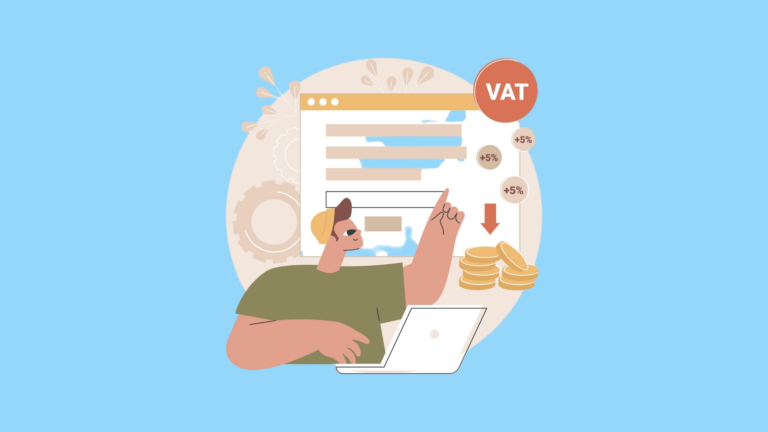For businesses of all sizes, VAT can be intimidating. You can do things like double-check that you registered before the cutoff point or adjust your prices to reflect VAT.
However, what happens to the VAT your company has to pay when it buys something from a foreign company? The reverse charge of VAT enters the picture here.
First, you can exhale with relief because the reverse charge does not apply to you if you are not registered for VAT.
On the other hand, if you purchase goods from companies outside of the UK and are registered for VAT, we should speak. Let us clarify what the reverse charge means, so don’t worry.
You can do things like double-check that you registered before the cutoff point or adjust your prices to reflect VAT.
What is the VAT (value-added tax)?
Value-added tax, or VAT, is a kind of tax that is added to the majority of goods and services that companies that are registered with VAT add to their sales. Although it is not required, you must register if your taxable turnover exceeds £90,000 in a single tax year for 12 months.
There are various exclusions, such as when you solely provide VAT-exempt goods and services.
How is VAT calculated?
If you are registered for VAT, you will charge VAT on the majority of your sales, based on the applicable rate (20% is the normal rate) for the goods and services you provide. If your business has paid VAT, you must maintain a record of the VAT you have collected. This is especially important if you have purchased items from another VAT-registered company.
After you file your VAT return, HMRC will be able to determine if the VAT difference needs to be paid or if you can claim it back. Reclaiming the difference indicates that you have overcharged clients and consumers for VAT while paying other businesses less. After receiving your VAT return, HMRC makes the reimbursements within 30 days.
By making up the difference, you are essentially saying that you have less VAT paid on goods than you have charged.
Utilizing bookkeeping software facilitates the easier storage of all VAT invoices and records, as well as the immediate submission of returns to HMRC.
What exactly is the VAT Reverse Charge?
VAT reverse charge is, in short, the amount of VAT you would have paid if you had purchased a good or service in the United Kingdom.
The client, not the provider, is now responsible for accounting for the VAT because it has been “reversed.” This also implies that the seller is exempt from having to register for VAT in the nation where the “supply” is made (the nation to which goods or services are delivered is known as the “place of supply”).
How does the VAT reverse charge operate?
For example, you may have paid £200 to a Spanish web developer to work on your website. The web developer will include an obligatory reference stating that the reverse charge must be imposed on their invoice, but they will not include VAT in their invoice.
Just like you would if you employed a web developer in the UK, you’ll include this on your return at the regular VAT rate of 20%. The amount of the reverse charge that must be applied to your VAT submission is £40, which is 20% of £200.
If the invoice is in a different currency, how do I compute the VAT reverse charge?
If the invoice is in a currency other than sterling, you cannot use the UK VAT rate; instead, you must convert the amount to sterling and then calculate the VAT reverse charge. Apply the exchange rate that was in effect on the invoicing date.
On my VAT return, how can I display the VAT reverse charge?
The reverse charge will appear twice on your VAT return:
- – incorporated into the overall amount of VAT you paid during that time.
- – And once more, in the total amount of VAT you collected during that same time frame (as though you were the service provider).
Instead of paying the VAT tax on one return and reclaiming it on the next, this essentially cancels it out in whole on one VAT return. Always make sure to get further counsel from your accountant if you need it!
And if I sell to a company that’s not in the United Kingdom?
The procedure is the same, but it goes the other way. Since the customer is responsible for calculating the VAT and adding a reverse charge to their VAT return, you would not charge VAT on the transaction; instead, you would mention that the VAT reverse charge is included.
Make sure the invoice accurately reflects the services rendered, the location to whom you are providing them, and the reason you are not collecting VAT from the customer.
Is the VAT reverse charge equivalent to the VAT domestic reverse charge?
No, even if they operate using the same idea. The building industry plan applies to individuals who are subject to the VAT domestic reverse charge. In order to prevent VAT fraud, it is used similarly to the reverse charge, which gives contractors the option to add VAT to any supplies they purchase and then report the amount on their VAT returns.




